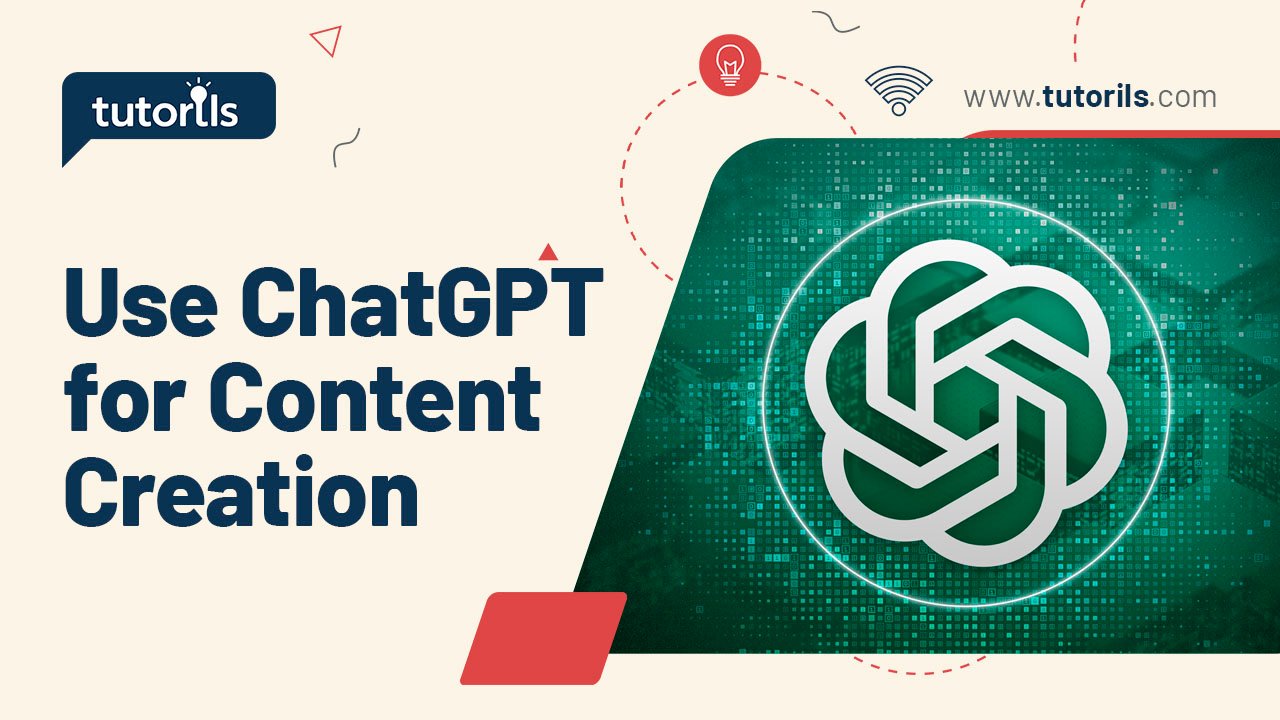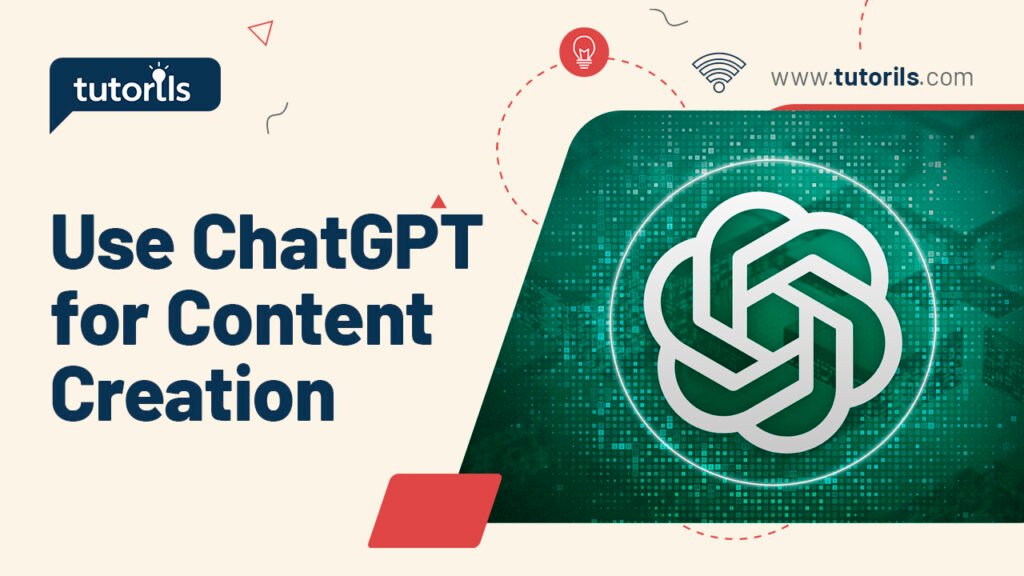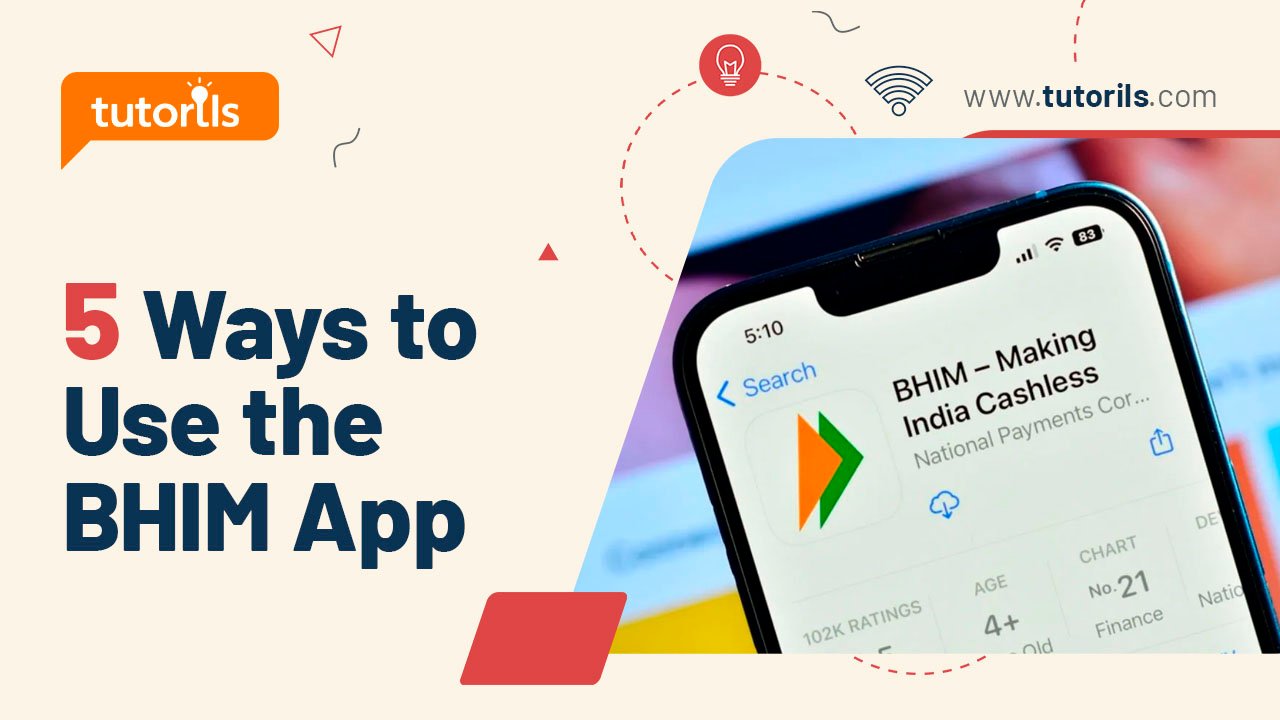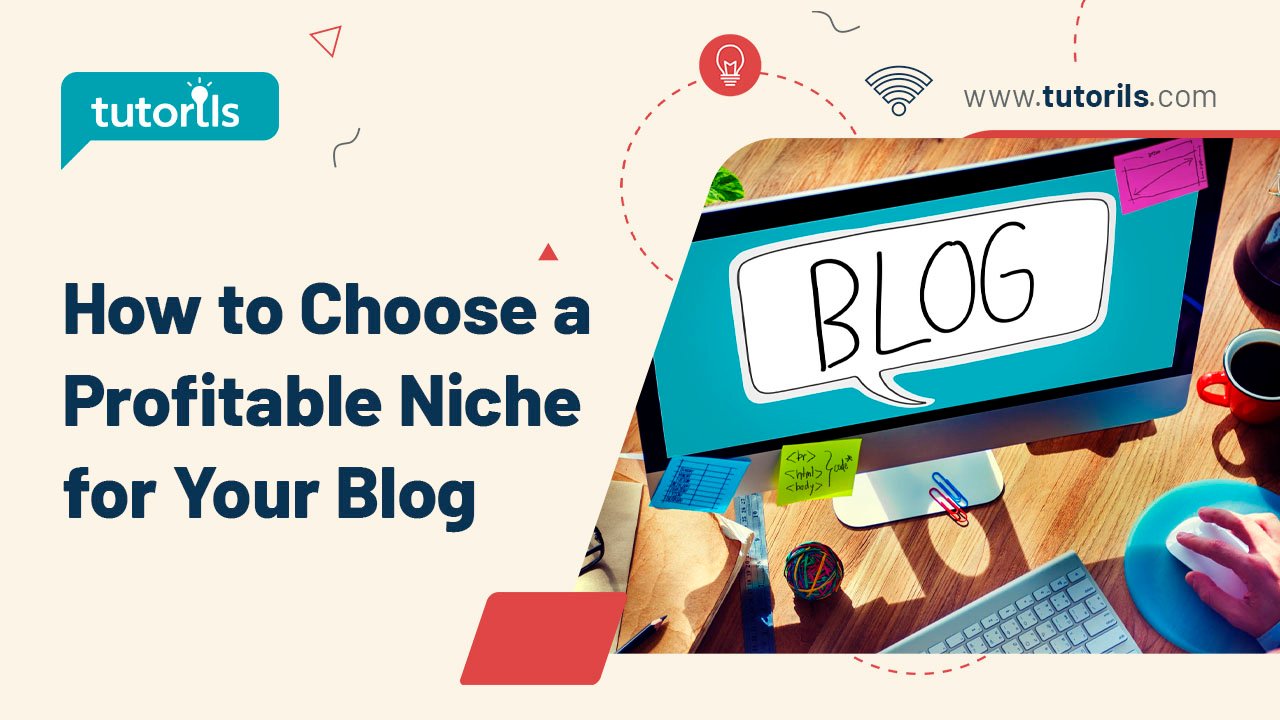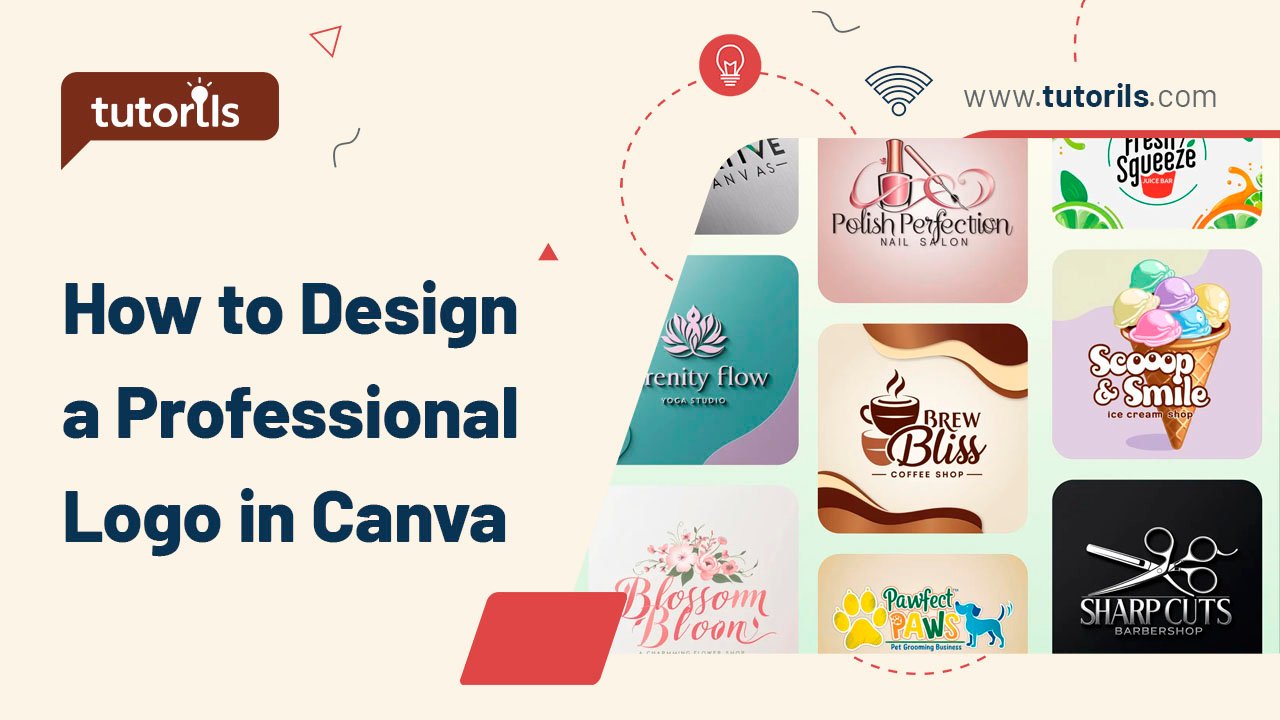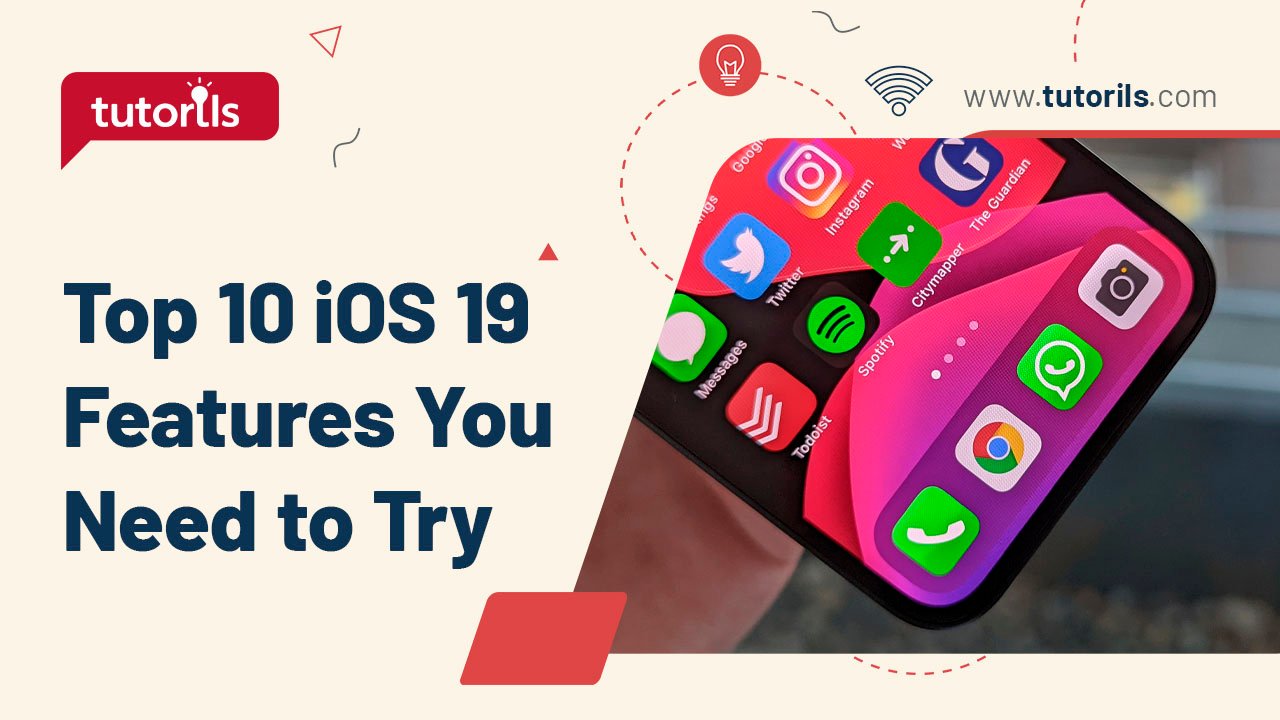Introduction
Creating high-quality content in 2025 is more competitive than ever, with businesses and creators needing fresh, engaging material to stand out. Enter ChatGPT, a powerful AI tool by OpenAI that simplifies content creation with its ability to generate human-like text. Whether you’re crafting blog posts, social media captions, or email campaigns, ChatGPT for content creation can save time and spark creativity.
In this Beginner’s Guide to ChatGPT for Content Creation, we’ll share seven practical tips to help you leverage ChatGPT effectively, curated by the experts at Tutorils #. From crafting prompts to optimizing for SEO, these strategies will help you create compelling content in 2025. Let’s dive in!
Why Use ChatGPT for Content Creation?
ChatGPT, powered by advanced language models like GPT-4o, uses natural language processing to generate text based on user prompts. A 2025 Hootsuite survey found that 46% of social media managers use ChatGPT for ideation and 39% for copywriting, highlighting its value in streamlining workflows. This guide will show you how to use ChatGPT for content creation to produce high-quality, audience-focused content without replacing the human touch. Below are seven actionable steps with real-world examples.
1. Craft Clear and Specific Prompts
The quality of ChatGPT’s output depends on the prompt’s clarity. Specific, detailed prompts are key to ChatGPT for content creation.
Step-by-Step Process:
- Visit chat.openai.com and sign up for a free account or upgrade to ChatGPT Plus (pricing at OpenAI).
- Write a prompt with context, tone, and goals (e.g., “Write a 300-word blog intro about sustainable fashion for eco-conscious millennials in a conversational tone”).
- Specify format (e.g., bullet points, paragraphs) and audience.
- Review the output and refine the prompt if needed (e.g., “Make it more persuasive”).
- Save useful prompts for reuse in ChatGPT’s interface.
Real-World Example:
Emma, a marketer, used the prompt: “Write a 100-word Instagram caption for a coffee shop targeting young professionals, focusing on organic coffee.” ChatGPT delivered a catchy caption that boosted engagement by 20%.
Pro Tip: Use action verbs like “write,” “generate,” or “create” and include details like word count or platform.
External Resource: Learn prompt engineering at OpenAI’s Prompt Guide.
2. Generate Blog Post Ideas and Outlines
ChatGPT excels at brainstorming, making it a top tool for content creation in 2025.
Step-by-Step Process:
- Input a prompt like: “Generate 5 blog post ideas about fitness trends for 2025 aimed at beginners.”
- Request an outline: “Create a detailed outline for a blog post about ‘Top Fitness Trends for Beginners in 2025’ with 3 sections.”
- Review and tweak the outline to align with your brand voice.
- Use ChatGPT to draft sections: “Write a 200-word intro for section 1.”
- Edit the output to add personal insights or data.
Real-World Example:
Rahul, a fitness blogger, used ChatGPT to generate an outline for a post on wearable fitness tech, saving 2 hours of planning and publishing faster.
Note: Always fact-check ChatGPT’s output, as it may include outdated or inaccurate data.
3. Write SEO-Optimized Content
ChatGPT can help create SEO-friendly content, but it requires guidance for ChatGPT for content creation.
Step-by-Step Process:
- Research keywords using tools like Ahrefs or Google Keyword Planner.
- Use a prompt like: “Write a 500-word blog post about ‘sustainable travel tips’ with the keyword ‘eco-friendly travel’ used 5 times, targeting eco-travelers.”
- Include meta titles and descriptions: “Generate an SEO meta description for the blog post.”
- Review for keyword stuffing and ensure natural flow.
- Use tools like SurferSEO to optimize further.
Real-World Example:
Lisa’s travel blog post, optimized with ChatGPT, ranked on Google’s first page for “eco-friendly travel” after adding her unique insights.
Pro Tip: ChatGPT isn’t SEO-optimized by default; pair it with tools like Writesonic for better results.
4. Create Engaging Social Media Content
ChatGPT can craft platform-specific posts, a game-changer for content creation in 2025.
Step-by-Step Process:
- Specify the platform and audience: “Write a 200-character Instagram caption for a bakery promoting vegan cupcakes, targeting health-conscious moms.”
- Request variations: “Generate 3 LinkedIn posts about leadership for executives.”
- Ask for hashtags: “Suggest 5 hashtags for a fitness post on Instagram.”
- Edit for brand voice and authenticity.
- Use ChatGPT for replies: “Suggest a response to a comment asking about vegan ingredients.”
Real-World Example:
Sonia, a bakery owner, used ChatGPT to create 6 Instagram reel ideas from a blog post, cutting content creation time from 3 days to 3 hours.
Note: Avoid using ChatGPT’s output verbatim to maintain authenticity.
External Resource: Check Hootsuite’s ChatGPT guide at Hootsuite Blog.
5. Draft Emails and Ad Copy
ChatGPT streamlines email and ad copy creation, perfect for marketing campaigns.
Step-by-Step Process:
- Use a prompt like: “Write a 150-word welcome email for new newsletter subscribers of a tech blog in a friendly tone.”
- For ads: “Create a short Facebook ad copy for an online coding course targeting beginners.”
- Include CTAs: “Add a ‘Sign Up Now’ CTA to the email.”
- Review for clarity and brand alignment.
- Test multiple versions for engagement.
Real-World Example:
Mark’s ad copy for a coding course, generated by ChatGPT, increased click-through rates by 15% after minor tweaks.
Pro Tip: Use ChatGPT to rephrase weak copy: “Rephrase this ad copy to be more persuasive”.
6. Summarize and Repurpose Content
Repurposing existing content saves time and maximizes reach in ChatGPT for content creation.
Step-by-Step Process:
- Upload or paste content: “Summarize this 1,000-word blog post into a 100-word social media post.”
- Repurpose for platforms: “Turn this blog post into 3 Twitter threads for professionals.”
- Request formats: “Convert this podcast transcript into a blog post outline.”
- Edit for tone and accuracy.
- Use tools like Castmagic for audio/video repurposing.
Real-World Example:
Anita repurposed a podcast episode into 5 social media posts using ChatGPT, boosting her LinkedIn engagement by 25%.
Note: Always add your unique perspective to avoid generic output.
7. Proofread and Enhance Existing Content
ChatGPT can polish drafts, ensuring error-free, engaging content.
Step-by-Step Process:
- Paste your draft: “Proofread this 300-word blog intro for grammar and clarity.”
- Enhance style: “Rephrase this paragraph to sound more conversational.”
- Check tone: “Ensure this post matches a professional tone for LinkedIn.”
- Request suggestions: “Suggest 3 ways to improve this headline.”
- Verify output for accuracy and brand voice.
Real-World Example:
Priya used ChatGPT to shorten her LinkedIn post by 50 words, making it clearer and doubling engagement.
Pro Tip: Use ChatGPT for sentiment analysis: “Analyze the tone of this comment and suggest a reply”.
What’s New in ChatGPT for 2025?
In 2025, ChatGPT’s GPT-4o model offers improved text generation, image analysis, and multilingual support, making it ideal for content creation in 2025. New features like Custom GPTs allow tailored applications (e.g., travel content assistant) for Plus users. However, ChatGPT still lacks real-time data and may produce repetitive phrases, so always verify outputs.
Comparison Table: ChatGPT Free vs. ChatGPT Plus
| Feature | Free Plan | ChatGPT Plus |
|---|---|---|
| Model Access | GPT-3.5 | GPT-4o, Custom GPTs |
| Speed | Slower, queue-based | Faster, priority access |
| Image Generation | Not available | Available (via DALL-E 3) |
| Advanced Features | Basic text generation | Image analysis, voice, links |
| Cost | Free | Check OpenAI |
Recommended Tools for ChatGPT Content Creation
These tools complement ChatGPT for content creation in 2025. Prices are in INR where applicable.
| Tool/App | Purpose | Price | Key Features | Link |
|---|---|---|---|---|
| ChatGPT Plus | Advanced AI content creation | Check OpenAI | GPT-4o, image generation, Custom GPTs | OpenAI |
| Writesonic | AI content with SEO tools | Free/₹999 | Blog writing, SEO optimization | Writesonic |
| Castmagic | Audio/video content repurposing | ₹3,999/mo | Transforms podcasts into posts | Castmagic |
| Hootsuite | Social media scheduling | ₹1,999/mo | Schedules ChatGPT-generated posts | Hootsuite |
| SurferSEO | SEO content optimization | ₹4,999/mo | Keyword analysis, content scoring | SurferSEO |
| Grammarly | Text polishing | Free/₹799 | Grammar and style checks | Grammarly |
| Canva | Visuals for content | Free/₹999 | Graphics for blog/social posts | Canva |
| Buffer | Social media management | Free/₹499 | Schedules and analyzes posts | Buffer |
| Narrato | AI content workflows | Free/₹799 | 100+ AI templates for content | Narrato |
| Photopea | Free photo editing | Free | Photoshop alternative for visuals | Photopea |
FAQ Section
How do I use ChatGPT for content creation in 2025?
To use ChatGPT for content creation, sign up at chat.openai.com, craft specific prompts (e.g., “Write a 200-word blog intro about AI trends”), and edit outputs for brand voice. Use GPT-4o (Plus) for advanced features like image analysis.
Is ChatGPT free for content creation?
ChatGPT’s free plan (GPT-3.5) supports basic content creation, but ChatGPT Plus offers GPT-4o, faster responses, and image generation. Check pricing at OpenAI. Free tools are sufficient for beginners but may lack advanced features.
Can ChatGPT create SEO-optimized content?
Yes, but it requires specific prompts like “Write a 500-word blog with keyword ‘AI tools’ used 5 times.” Pair with tools like SurferSEO for better optimization, as ChatGPT isn’t SEO-focused by default.
How do I make ChatGPT content authentic?
Edit ChatGPT’s output to match your brand voice, add personal insights, and avoid copying verbatim. Use it for ideation, outlines, or drafts, not final content, to maintain authenticity.
What are the limitations of ChatGPT for content creation?
ChatGPT may produce repetitive phrases, lacks real-time data, and can generate inaccuracies. Always fact-check and refine outputs to ensure quality and relevance for content creation in 2025.
Conclusion
With these seven tips, you can master how to use ChatGPT for content creation in 2025, creating engaging blogs, social posts, and more. By crafting specific prompts, optimizing for SEO, and adding your unique voice, ChatGPT becomes a powerful ally. Start experimenting today to streamline your content workflow!
Have feedback or tips to share? Leave a comment, share this guide, or join our newsletter at Tutorils # for more AI-driven tutorials. Let’s create smarter with ChatGPT!
Note: All photos and videos sourced from Google or YouTube. For content issues, contact us at Tutorils Contact Us.
More Resources
If you find any issues with this post or wish to have it removed, please reach out: Contact Us.
